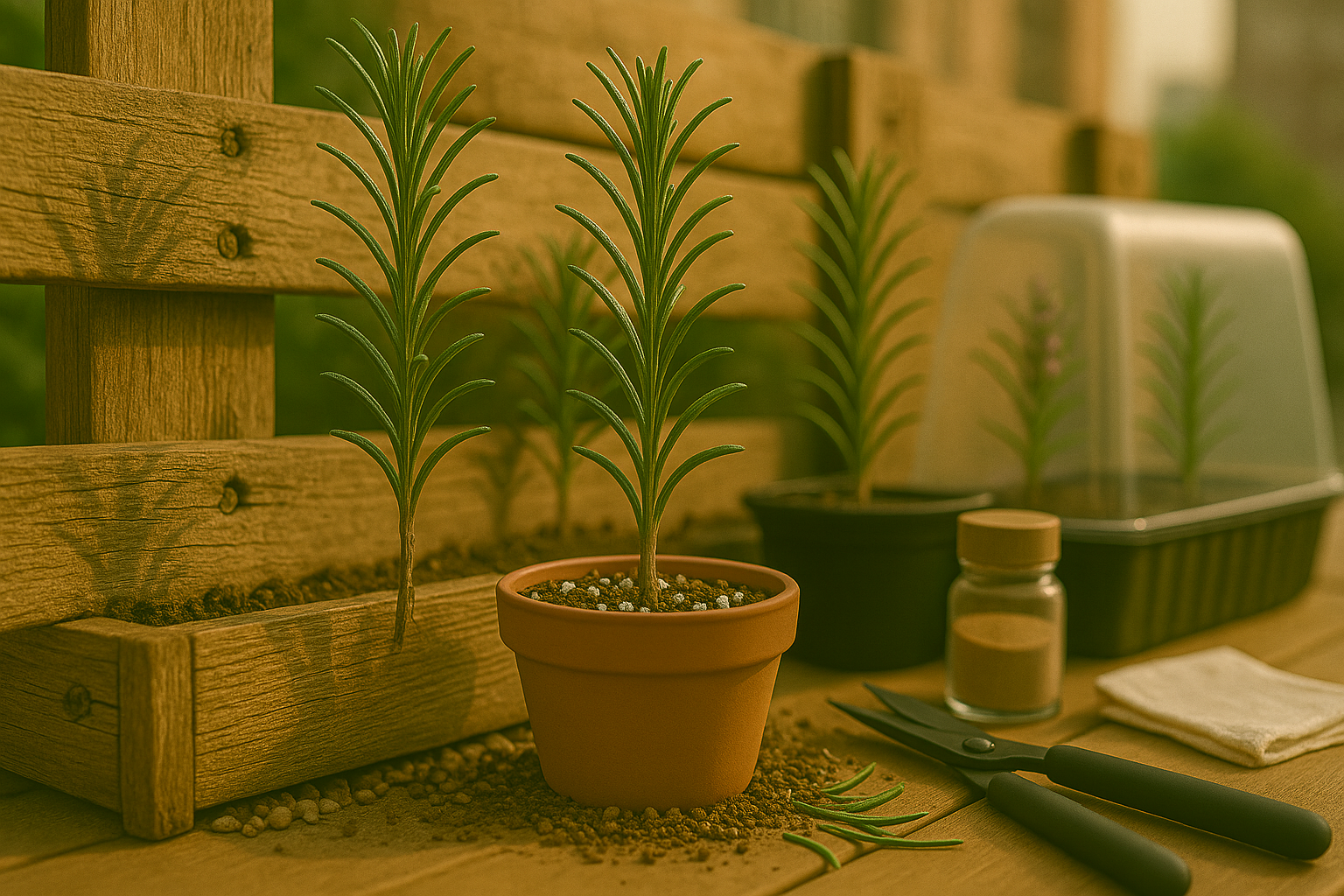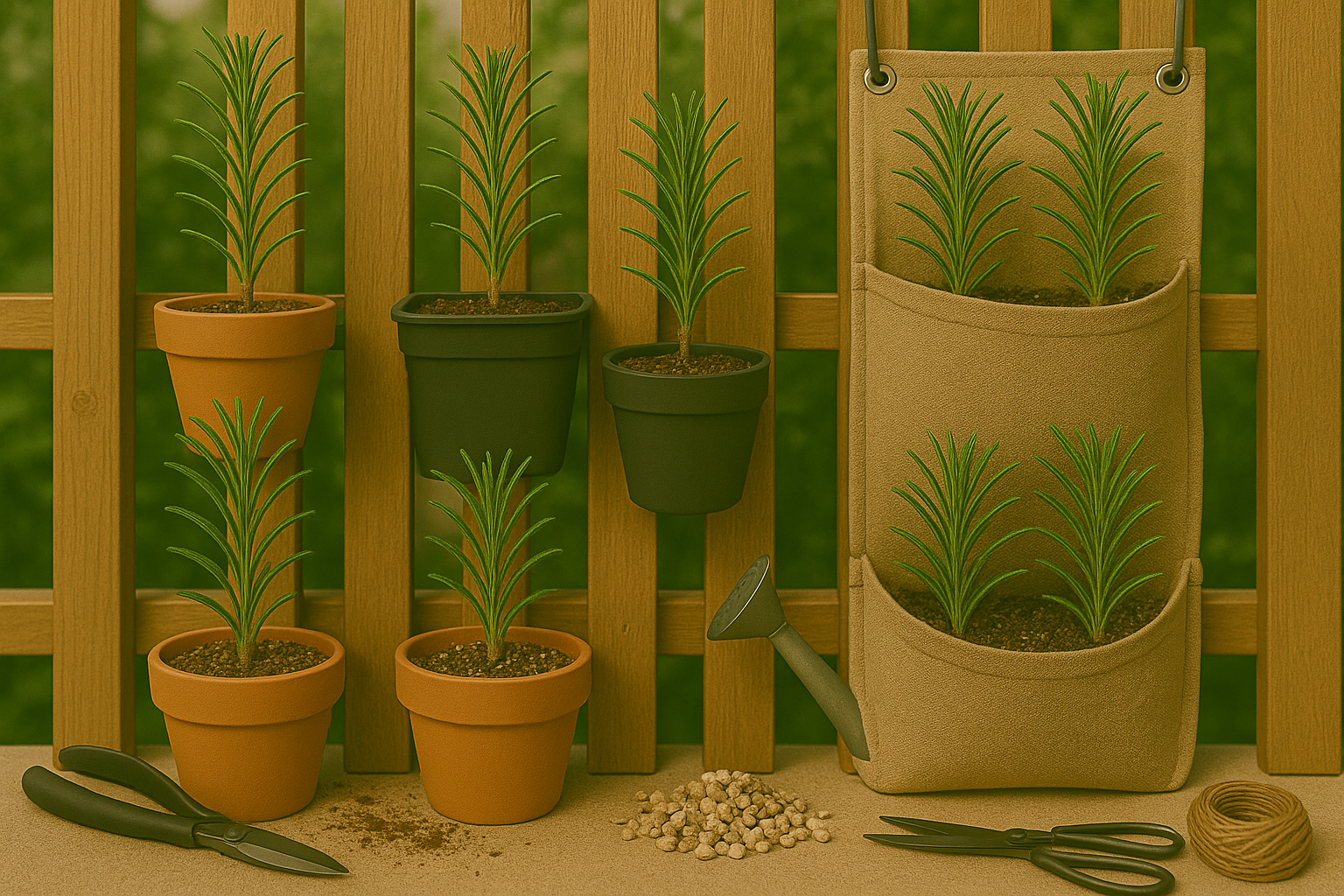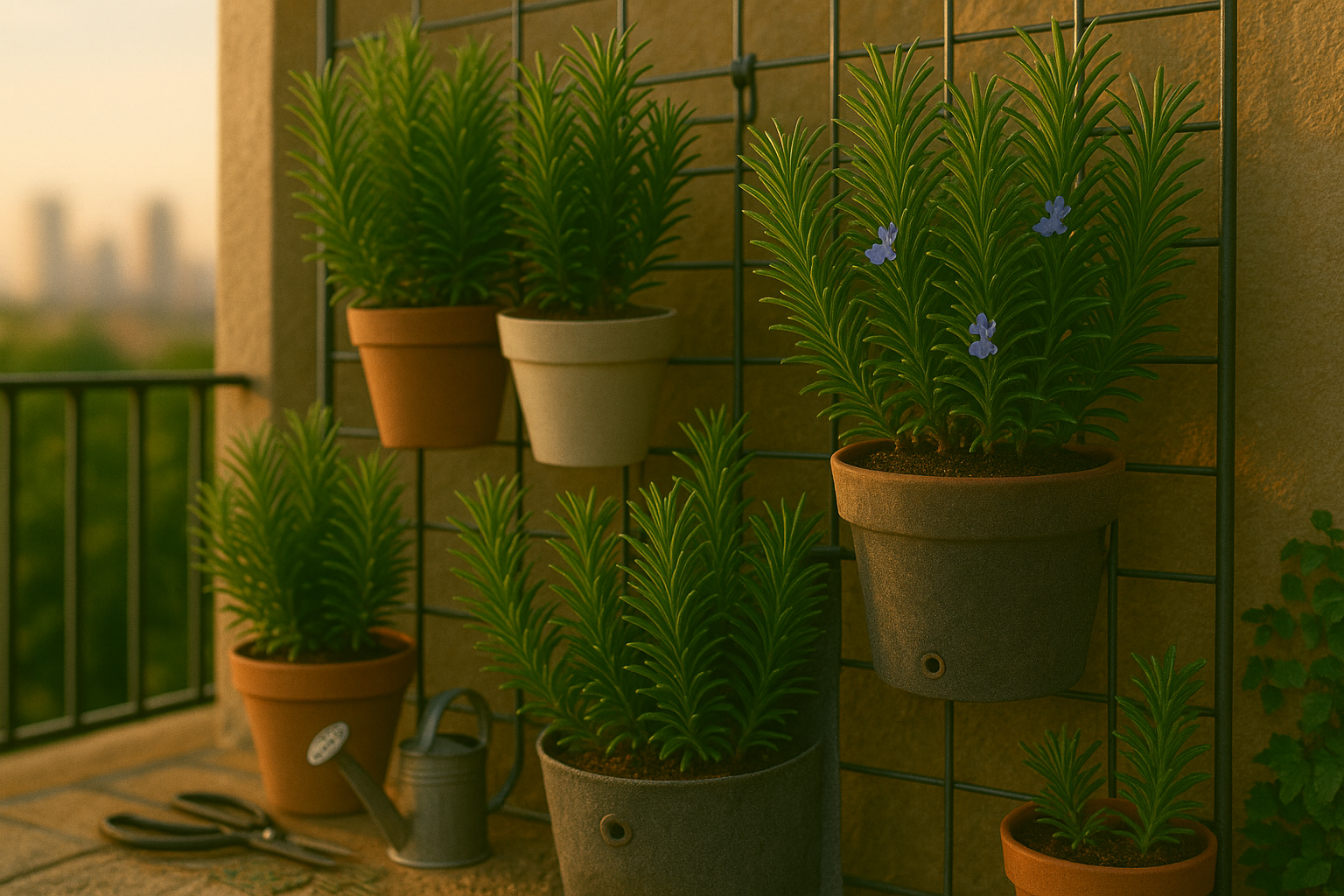Why Grow Rosemary in Vertical Gardens?

Vertical gardening has become the go-to solution for urban dwellers and anyone short on outdoor space, offering an innovative way to bring fresh greenery to balconies, patios, and even kitchen walls. In cities where every square foot counts, going up instead of out means you can enjoy gardening without sacrificing valuable real estate.
Rosemary is especially well-suited to these setups, making it a top pick for your vertical garden. Its upright, woody stems and relatively shallow root system mean it thrives in wall planters, hanging pockets, or stacked containers—perfect for maximizing limited space. Harvesting becomes a breeze since you can clip sprigs at eye level without crouching or reaching. Plus, rosemary’s fragrant, needle-like foliage transforms vertical spaces into lush, aromatic focal points indoors or out.
Beyond looks and convenience, rosemary stands out for its resilience. It tolerates drought, thrives in well-draining containers, and requires minimal fuss compared to more delicate herbs like basil or cilantro, which often need more water and care. This hardiness means rosemary can handle the sometimes-dry conditions of vertical planters, resisting pests and diseases even if watering isn’t perfectly consistent. Plus, its Mediterranean charm brings a touch of sophistication to any living wall.
For anyone seeking a low-maintenance, visually pleasing, and highly practical addition to their vertical garden, rosemary is a natural choice—making it possible to add fresh flavor to your meals, clean the air, and enjoy a touch of green, even in the smallest urban apartment.
Choosing the Best Setup for Vertical Rosemary Gardens
When it comes to growing rosemary vertically, the right setup can make all the difference for your plant’s health and your gardening experience.
Wall Planters
Wall planters are a sleek, space-saving choice that attach directly to fences or walls. They’re great for maximizing sunlight if placed on south-facing walls, but you’ll need to watch drainage closely since rosemary hates soggy roots.
Stacked Pots
Stacked pots offer more flexibility—they’re easy to rearrange for better sun exposure and often have built-in drainage holes, promoting the dry, airy conditions rosemary thrives in. However, the lower pots can get shaded and have less airflow, which might encourage fungal issues.
Hanging Pockets
Hanging pockets are lightweight and simple to install anywhere, making them ideal for renters or small patios. Still, they can dry out quickly and may not provide enough root space for mature rosemary, so choose deep, well-ventilated fabric options.
Upcycled Wooden Pallets
Upcycled wooden pallets are a budget-friendly DIY pick, fantastic for herbs when leaned against a wall. With pallets, you can control spacing and drainage with a liner, but untreated wood might rot over time and they aren’t as mobile for chasing sunlight.
Tips for Growing Healthy Rosemary
- Prioritize setups with excellent drainage and airflow.
- Ensure each plant gets ample direct sunlight—at least 6 hours a day.
- Avoid crowding so air can circulate and reduce mildew risks.
- Water sparingly, regardless of the system.
In short, stacked pots and wall planters strike the best balance for most gardeners. However, with some tweaks—like drilling extra holes or adding a layer of gravel—all four setups can be tailored to help your rosemary thrive.
Planting and Positioning Rosemary for Vertical Success
Choosing the right rosemary for your vertical garden starts with strong, healthy seedlings or seeds specifically marked for container or compact growth, as these varieties adapt best to limited spaces and upright planters. Look for sturdy stems, vibrant green foliage, and no signs of pests or yellowing; avoid leggy, wilted, or root-bound plants. If starting from seed, opt for certified seeds from a reputable source to ensure a higher germination rate.
Spacing is crucial even when working upward, not outward—place rosemary plants at least 10–12 inches apart within your vertical setup to give their roots room to spread and reduce the risk of overcrowding or disease. Choose a well-draining, sandy loam soil, ideally a commercial potting mix blended with extra perlite or coarse sand to mimic rosemary’s native Mediterranean habitat and prevent soggy roots.
For positioning, place rosemary pockets or planters on the sunniest side of your vertical structure—south or west-facing spots are usually ideal—and stagger the plants so no one is completely shaded by another, maximizing daily sunlight exposure. Good airflow is just as important; avoid overly tight groupings or tucking patches into hidden corners, as stale air encourages fungal problems.
A simple tip is to occasionally rotate movable vertical planters or adjust modular systems to even out light coverage and maintain vibrant, bushy growth. With these steps, your rosemary will thrive upward, giving you healthy sprigs for the kitchen all year long.
Essential Care Tips for Rosemary in Vertical Gardens

When growing rosemary in vertical gardens, proper watering is crucial to avoid the common issue of root rot. Rosemary, a Mediterranean herb, thrives best in well-drained soil and does not like constantly wet roots. Water your rosemary only when the top inch of soil feels dry to the touch—this might be once or twice a week, but always let the plant and environment guide you rather than following a strict schedule. Make sure your vertical garden system has enough drainage holes to prevent excess water from accumulating near the roots. If you’re using a pocket planter or stacked containers, angle them slightly if possible to encourage quick drainage, and consider adding a layer of coarse gravel or perlite at the bottom of each planting pocket.
Fertilizing Rosemary in Vertical Gardens
Fertilizing rosemary in vertical gardens requires a gentle approach, as too much fertilizer can harm the plant or cause it to grow leggy in confined spaces. Choose a diluted, balanced liquid fertilizer (such as a 10-10-10 formula) every six weeks during spring and summer, but reduce or stop feeding in cooler months when growth slows. For organic options, a light mulch of compost or worm castings applied in early spring provides gradual nourishment without overwhelming the roots. Always avoid heavy feeding, especially with nitrogen, since rosemary prefers steady growth rather than rapid spurts.
Pruning for Healthy, Compact Growth
Pruning plays a key role in the health and appearance of rosemary grown vertically. Unlike sprawling in-ground plants, vertical garden rosemary needs strategic trimming to stay compact and lush. Begin pruning the tips of stems when the plant is young to encourage branching and fuller growth. Throughout the growing season, use clean, sharp scissors to snip off up to one-third of new growth at a time, shaping the plant to prevent it from overshadowing its neighbors. Remove any yellow, dead, or woody stems to promote air circulation, which helps prevent mildew and disease. With consistent, mindful pruning, your rosemary will thrive in limited space, producing fragrant, healthy sprigs ready for harvest.
Troubleshooting Common Issues in Vertical Rosemary Gardens
Vertical rosemary gardens are space-saving and visually appealing, but they can encounter some common problems that affect healthy growth.
Overwatering
Overwatering is the most frequent issue—rosemary prefers well-drained soil, and in vertical setups, excess moisture can accumulate in the bottom pockets, causing root rot. To diagnose overwatering, check if the soil feels soggy or if the leaves are yellowing and dropping. If so, reduce watering and make sure containers have adequate drainage holes.
Insufficient Sunlight
Rosemary needs at least six hours of direct sunlight daily. If you notice spindly growth or pale leaves, your garden might not be getting enough light. Move your garden closer to a sunny window or use grow lights to boost light exposure.
Pest Problems
Pests like aphids or spider mites can infest your rosemary. You might spot them as visible insects or notice a sticky residue on the leaves. Treat pests by gently rinsing the plants with soapy water and wiping the leaves clean.
Poor or Stunted Growth
Slow growth or yellowing leaf tips can indicate nutrient depletion or cramped roots. Feed your plants with a balanced, water-soluble fertilizer once a month. If you see roots circling the soil or poking out, it’s time to repot the rosemary into a slightly larger container.
Persistent Problems
If issues continue despite your troubleshooting efforts, consider relocating the entire vertical garden to a spot with better light, improved airflow, and easier access for maintenance. Regular inspection and prompt care will keep your rosemary thriving and flavorful all season long.
Harvesting and Using Vertical-Grown Rosemary
Harvesting rosemary from your vertical garden is easy and rewarding, especially if you want to encourage continuous growth and keep the flavor strong. The best technique is to snip off sprigs using clean, sharp scissors or pruning shears, cutting just above a leaf node (where the leaves meet the stem). This encourages branching and helps the plant stay bushy rather than leggy.
Focus on taking no more than one-third of the plant at a time to avoid stressing it. Freshly cut rosemary can be used all over your kitchen:
- Toss a few sprigs onto roasted potatoes
- Infuse oil or vinegar for salads
- Add to bread dough for an aromatic twist
It’s also a great addition to homemade herbal teas and cocktails, or you can tie bundled sprigs together to use as fragrant skewers for grilled vegetables and meats. Beyond cooking, rosemary makes lovely homemade sachets, natural wreaths, and bath infusions.
When you have more rosemary than you can use fresh, drying is simple: gather small bunches, tie them with kitchen twine, and hang them in a well-ventilated, dry spot out of direct sunlight for about two weeks. Once the leaves are dry and crumbly, strip them from the stems and store them in airtight containers, away from heat and light. Dried rosemary keeps its flavor for months, making it easy to enjoy the bright, woody notes of your vertical garden harvest well into the off-season.
